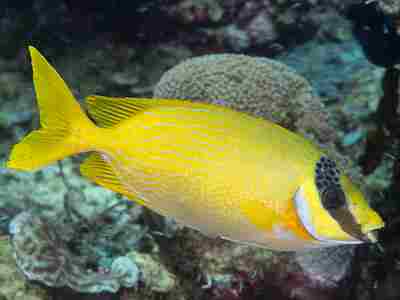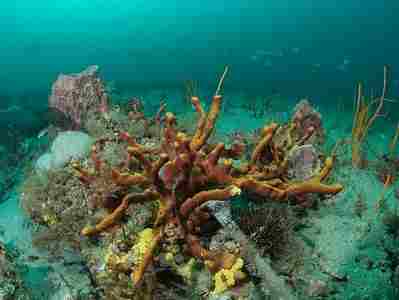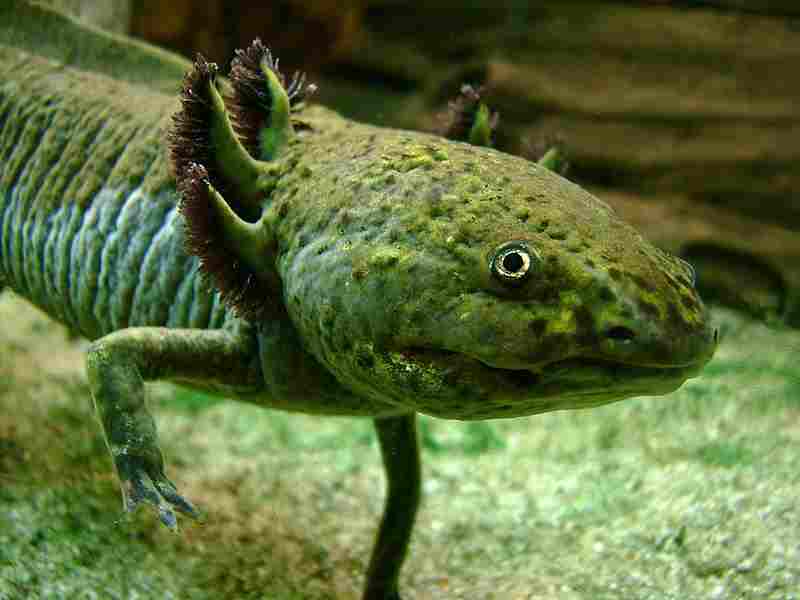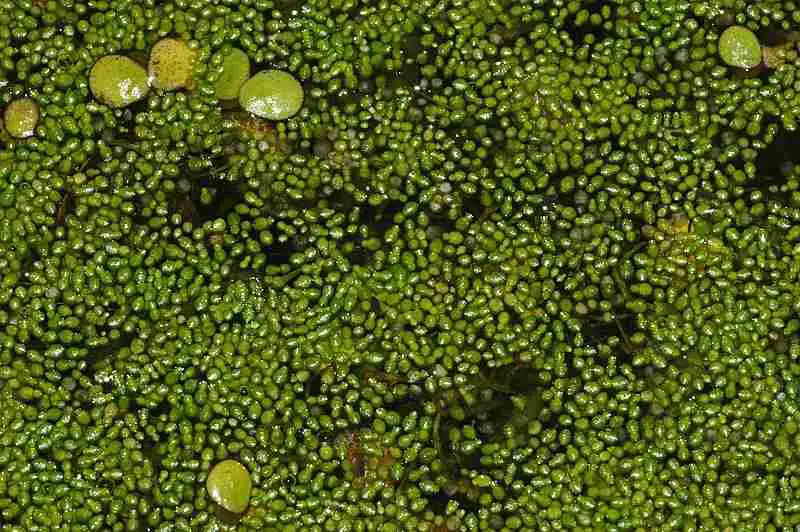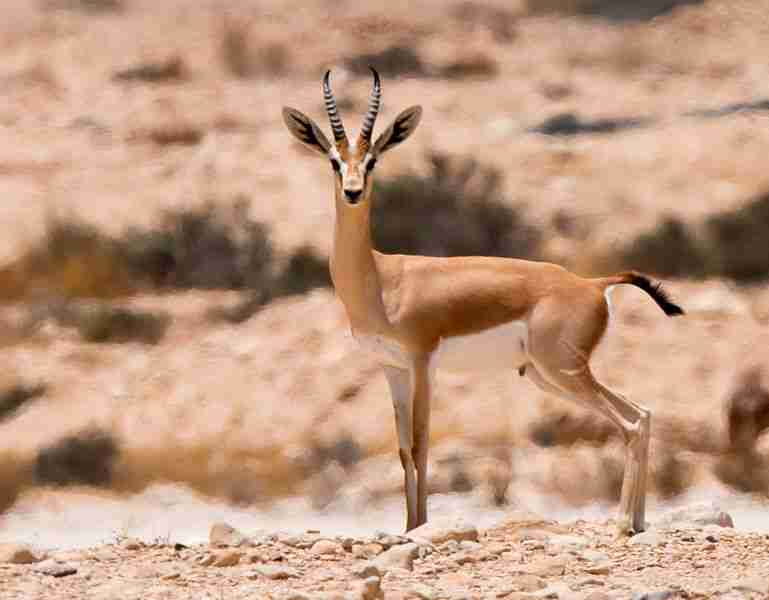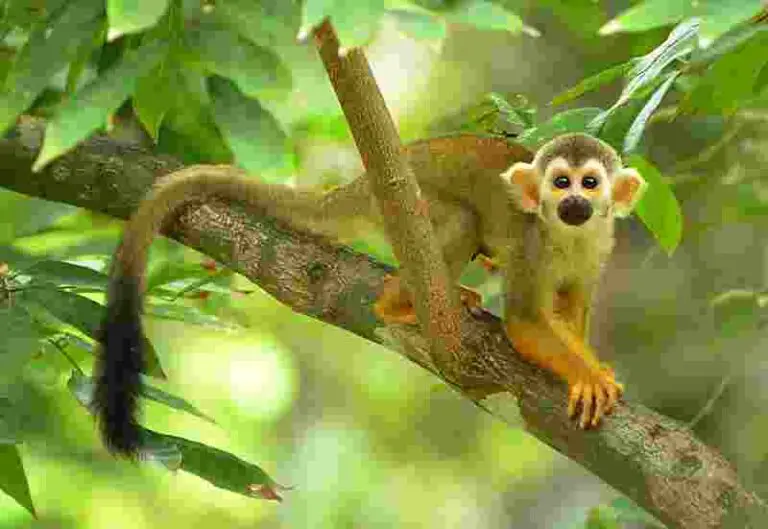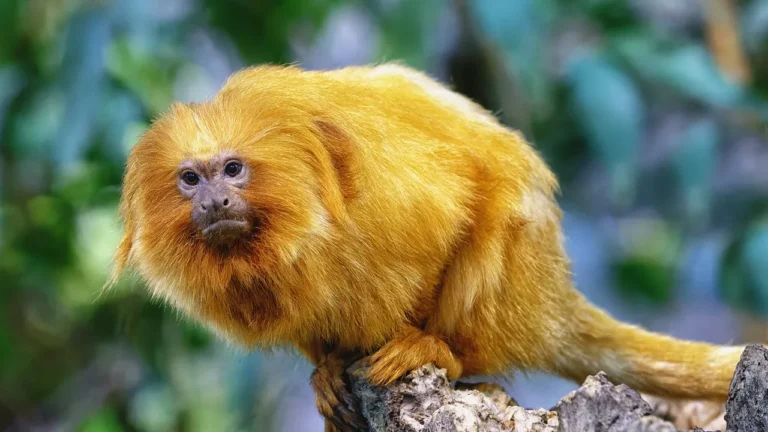11 Food Chain Facts and Characteristics Discussed
Food chain facts and characteristics include feeding-relationship depiction, linear trend, photosynthetic and chemosynthetic foundations, variable producer types, similarity to energy pyramid, multiplicity of trophic level occupation, richness-dependent chain length, energy losses, reliance on the Sun, role of nutrients, and lower complexity than food webs.
This article discusses food chain facts and characteristics, as follows;
Fact1: Food Chains Outline Feeding Relationships in Ecosystems
The food chain is a fundamental concept in ecology that outlines the feeding relationships that occur among organisms in an ecosystem.
It represents the flow of energy and nutrients as one organism consumes another. The key components of the food chain include; producers, primary consumers, secondary consumers, tertiary consumers, and decomposers.
Producers, typically green plants, algae, and some bacteria, are the foundation of the food chain. They convert light from the sun into bioenergy through photosynthesis and produce organic compounds. These plants are the primary source of energy for all other organisms in the ecosystem.
Primary consumers (herbivores) are animals that survive mainly by feeding on producers. These animals consume plants, algae, or chemosynthetic bacteria to obtain energy. Examples of primary consumers include grasshoppers, rabbits, and large herbivore like bison, as well as aquatic animals like rabbitfish and marine snails.

Secondary consumers (carnivores) are predatory organisms that feed on herbivores. They obtain their energy by consuming these primary consumers, but are less dominant than tertiary consumers. Examples of secondary consumers include foxes, snakes, and some carnivorous arthropods like crustaceans and insects.
Tertiary consumers are predators that feed on both primary and secondary consumers. They occupy the higher trophic levels of the food chain. Examples include hawks, eagles, large fish, as well as ground-dwelling carnivores like wolves and jaguars.
Decomposers are instrumental in the biodegradation of organic matter and recycling of nutrients in the ecosystem. These organisms feed on the remains of dead plants and animals, thereby returning essential nutrients to the soil for utilization by producers. Decomposers include fungi, bacteria, and detritivores like earthworms.
The food chain is a simplified representation of the intricate web of feeding relationships that occur in ecosystems. In reality, most organisms have multiple sources of food and can occupy different trophic levels, which establishes a more intricate system of energy transfer.
Understanding these feeding relationships is an important aspect of ecology, as it helps in comprehending the flow of energy and nutrients through ecosystems, which, in turn, impacts ecosystem productivity and sustainability.
Fact 2: The Ideal Trend of A Food Chain is Linear
The concept of a linear food chain, where each organism feeds on the one below it, represents a simplified and idealized model of energy flow in ecosystems.
In this linear model, energy (in the form of food materials) is transferred in a straightforward, step-by-step fashion, from primary producers to herbivores, then to carnivores (and omnivores). While this linear model serves as a useful starting point for understanding feeding relationships, it is important to note that real-world ecosystems are far more complex and usually involve intricate food webs comprising of multiple interconnected relationships.
Some Important Points About the Linear Food Chain Model
Important points about the linear food chain have to do with energy flow, trophic levels, and simplified representation, all of which are discussed here.
In a linear food chain, energy flows unidirectionally, with each trophic level transferring energy to the next. This model illustrates how energy is progressively passed from lower to higher levels in an ecosystem.
The linear food chain concept highlights the idea of trophic levels, where organisms are categorized based on their position as producers or consumer in the chain. Primary producers are at the first trophic level, followed by herbivores, then carnivores at higher trophic levels.
This implies that the linear food chain provides a simplified way to understand energy transfer in ecosystems. It is particularly useful in educational contexts to introduce the concept of trophic structure.
While the linear food chain is a helpful model, it does not fully capture the complexity of feeding relationships that exists in nature. Most terrestrial and aquatic ecosystems involve a network of interactions, with many organisms feeding on multiple species and simultaneously serving as prey for others. This complexity is better represented by food webs.
As is discussed later in this article, food webs are a more realistic representation of ecosystem interactions. They illustrate the interconnected nature of feeding relationships, with organisms having significant adaptability, with multiple food sources as well as predators. Food webs provide a more accurate depiction of how resources like energy and nutrients circulate in ecosystems.
Fact 3: Photosynthesis and/or Chemosynthesis Form the Basis of the Food Chain
Photosynthesis and chemosynthesis are fundamental processes that underpin the beginning of most food chains and food webs in ecosystems, by providing the primary inlet of energy for all life on Earth.
These processes are responsible for converting inorganic raw materials into organic matter (biomass), which itself constitutes the foundation for feeding relationships in various ecosystems.
Overview of Photosynthesis and Chemosynthesis in Ecosystems
Photosynthesis is the natural process by which green plants, micro and macroalgae, as well as some bacteria species convert light energy, typically from solar radiation, into chemical energy that is stored in organic compounds like glucose. This process is represented by the following equation;
6 CO2 + 6 H2O + light energy → C6H12O6 + 6 O2 ---(1)
Primary producers, such as vascular and non vascular plants, phytoplankton, and some photosynthetic bacteria, carry out photosynthesis. They thereby serve as the primary source of energy for ecosystems, producing organic matter which is consumed by herbivores and other heterotrophic organisms.
Chemosynthesis is a process that occurs in some specialized bacteria and archaea, typically in environments where sunlight is inaccessible, such as deep-sea hydrothermal vents (abyssal marine zones) and certain cave ecosystems.
Instead of utilizing light energy, chemosynthetic organisms use the energy released from chemical reactions to transform inorganic compounds, such as methane or hydrogen sulfide, into organic compounds. The equation for a typical chemosynthetic reaction might look like this;
CO2 + 4 H2S + O2 → CH2O + 4 S + 3 H2O ---(2)
Chemosynthetic bacteria function as the primary producers in these unique ecosystems, and support a range of other organisms that rely on them for food and sustenance.
Fact 4: Types of Producers Vary for Aquatic and Terrestrial Food Chains Respectively
In both aquatic and terrestrial ecosystems, producers have a fundamental function with respect to initiating food chains and sustaining life. However, the types of producers differ between these two environments due to variations in available resources and environmental/abiotic conditions.
*Producers in Aquatic Food Chains
In aquatic ecosystems, particularly marine environments, the primary producers are often microscopic, autotrophic groups, such as phytoplankton. These single-celled or colonial organisms utilize sunlight and dissolved nutrients (like phosphates and nitrates) to carry out photosynthesis.
Seaweeds and aquatic plants are also considered primary producers in many aquatic ecosystems, especially in freshwater bodies. Like phytoplankton, these autotrophs convert sunlight into chemical energy and help fortify the foundation of the aquatic food chain or energy pyramid.
In some deep-sea zones of marine ecosystems, where adequate sunlight is unavailable, chemosynthetic bacteria are the primary producers. These bacteria use the energy from chemical reactions, like the oxidation of hydrogen sulfide, to drive the synthesis of organic compounds.
*Producers in Terrestrial Food Chains
In terrestrial ecosystems like forests, grasslands and deserts; plants, including various species of trees, shrubs, grasses, and other vegetation, are the primary producers. These plants rely on sunlight, carbon dioxide, and soil nutrients to carry out photosynthesis.
In some arid or extreme terrestrial environments, where plant growth may be limited, succulents, photosynthetic bacteria, lichens, or non vascular plants like mosses can function prominently as primary producers.
Unlike aquatic environments, chemosynthetic organisms are not common primary producers in terrestrial ecosystems. The availability of sunlight in most terrestrial habitats fosters the dominance of photosynthetic plants.
The key difference between these environments is the reliance on different types of primary producers to convert energy from available sources into organic matter.
While aquatic ecosystems often depend on phytoplankton and other microbial photosynthetic organisms as well as hydrophytes, terrestrial ecosystems rely primarily on macroscopic plants. Understanding these variations is important for a full concept of the diversity of feeding relationships and ecological dynamics in different ecosystems.
Fact 5: The Food Chain Serves a Similar Purpose to the Energy Pyramid
Food chains and energy pyramids are ecological concepts that serve similar purposes in understanding the flow of essential resources within ecosystems, and the relationships between different organisms. Both concepts help illustrate how energy is transferred from one trophic level to another in a simplified manner. This section discusses how they are related.
*Overview of the Food Chain Concept
A food chain is a linear illustration of the feeding relationships that occur within an ecosystem, and shows the flow of energy from one organism to another.
It typically commences with primary producers (which may be plants or photosynthetic microbes) and progresses through various trophic levels, including herbivores (primary consumers), carnivores (secondary consumers), and so on, until it terminate at the apex predators.
The food chain highlights feeding by photosynthesis, herbivory and predation, as well as the direction of energy transfer, emphasizing predator-prey relationships.
*Overview of the Energy Pyramid Concept
An energy pyramid, sometimes referred to as the trophic pyramid, is a geometrical representation of the distribution of energy across various levels within an ecosystem.
It comprises basically of stacked horizontal bars, where each bar represents a specific trophic level.
The base of the pyramid typically represents the primary producers, and each higher level represents consumers in different hierarchical ranks.
The width of each bar also corresponds to the amount of energy that is available to organisms at that trophic level. Energy decreases as one moves up the pyramid due to energy loss or wastage in metabolism and excretion.

Relationship Between Food Chains and Energy Pyramids
Food chains and energy pyramids are similar and interrelated because food chains depict the actual feeding relationships and energy transfer between organisms, while energy pyramids quantify and also visualize the diminishing energy as it moves up the trophic levels.
It can be said that the representation of predator-prey interactions and energy flow by the food chain, provides the foundation for constructing energy pyramids.
Energy pyramids help to illustrate the decreasing energy that is availability at each successive trophic level; a concept that in fact originates from the food chain. The narrower bars at higher levels of the pyramid symbolize the reduced energy content available for consumers.
Both food chains and energy pyramids are essential tools for ecologists to understand and communicate how energy is transferred and distributed in ecosystems. While food chains focus mainly on the trend of feeding relationships, energy pyramids seek to visually quantify the energy dynamics within trophic levels, thereby offering a complementary perspective on the dynamics of energy resources in ecosystems.
Fact 6: A Single Consumer can Function in Multiple Food Chain Levels
In ecological food chains, the concept of trophic levels and the transfer of energy typically involves a linear progression from primary producers to primary consumers, secondary consumers, and so on.
However, it is important to recognize that in complex ecosystems, a single consumer organism can have a role in multiple trophic levels, blurring the traditional and simplified boundaries of food chains. How this phenomenon occurs is explained as follows;
Causes of Multi-trophic Functions in Complex Ecosystems
Single organisms may function at multiple trophic levels of the food chain if they are; omnivores, opportunistic feeders, scavengers, cannibals, or invasive species; as well as if they have specialized diets.
Many organisms are classified as omnivores, meaning they consume both plant biomass (autotrophs) and parts of their fellow animals (heterotrophs).
For example, humans are omnivores. We feed on plant-derived materials, such as fruits and vegetables, as well as animal products like meat. This means that humans and other omnivores can function in both herbivore (plant-eater) and carnivore (meat-eater) trophic levels within various food chains.
Some animals are opportunistic feeders, and can adapt their diet on the basis of food availability.
For example, raccoons can consume a variety of foods, including plants, insects, small mammals, and human garbage. Depending on what is accessible, they can be part of different trophic levels.
Scavengers are organisms that primarily feed on dead and partially-decomposed animal remains.
Vultures, for instance, feed on the remains of animals that have died. They can be considered both secondary consumers (when feeding on the meat of a dead primary consumer) and detritivores (for consuming carrion).
In some cases, individuals within a species may engage in cannibalism, where they consume other members of their own species.
Cannibalistic behavior can lead to individuals occupying multiple trophic levels, as they act as both predators and potential prey.
When invasive species are introduced to new environments, they tend to disrupt the natural trend of local food chains and establish themselves as consumers in multiple trophic levels. Their impacts can ripple through the ecosystem.
Also, some organisms have highly specialized diets that permit them to feed on other organisms in multiple trophic levels. For instance, certain species of fish may feed on both zooplankton (primary consumers) and smaller fish (secondary consumers).
The ability of a single consumer to function in multiple trophic levels reflects the complexity and adaptability of ecosystems. This phenomenon is an important one to consider when studying ecological relationships, because it highlights the interconnected nature of food chains as well as the versatility of organisms in their roles as consumers.
Fact 7: The Length of a Food Chain is Determined by the Richness of the Ecosystem
The length of a food chain within an ecosystem is influenced by the richness and complexity of that ecosystem.
In ecological terms, the term "richness" or species richness is used in reference to the biodiversity and the number of species present in a given habitat. This section discusses how the richness of an ecosystem affects the length of its food chains.
Link Between Ecosystem Richness and Food Chain Length
The length of food chains can be assessed in terms of factors that influence this variable; including biodiversity, trophic levels, specialization, complexity, energy flow, energy efficiency, stability, resilience, and human impacts.
Ecosystems with high biodiversity typically support longer food chains. This is because a diverse array of species can occupy various trophic levels, establishing a broader range of interactions.
For instance, a forest ecosystem with a rich diversity of plant species can support a large population of herbivores that feed on different types of vegetation, which in turn can sustain a variety of predators at higher trophic levels.

Rich ecosystems often feature species with specialized ecological niches, leading to complex and interconnected food webs. Specialization enables organisms to exploit unique food sources, and occupy specific trophic positions; which builds out on a large scale to form stable and extensive food chains.
In contrast, ecosystems with low species diversity may have shorter and less complex food chains because there are fewer options for consumers to exploit.
Longer food chains are more common in ecosystems with abundant, active primary production, where energy from the sun is efficiently converted into biomass by plants or other primary producers.
Highly productive ecosystems can sustain more trophic levels, as there is sufficient energy available to support the growth and reproduction of consumers at each level.
Rich and complex ecosystems with longer food chains tend to exhibit greater longterm stability and resilience. The presence of diverse species can serve as a buffer against disruptions, such as the decline of a single species, by allowing other groups to compensate.
Short food chains in less diverse ecosystems may make them more vulnerable to disturbances, as there are fewer alternative pathways for energy flow.
Human activities and their environmental impacts, such as habitat destruction and overexploitation, can reduce the richness of an ecosystem, resulting in shorter food chains. This can disrupt ecological relationships and negatively impact the overall health of the ecosystem.
Food Chains of Aquatic vs. Terrestrial Ecosystems
Aquatic ecosystems, like coral reefs and kelp forests, can have exceptionally long food chains due to their (usually) high biodiversity and the presence of numerous trophic levels.
Terrestrial ecosystems, including savannas, deserts and prairies, may have shorter food chains in comparison because they can have lower species richness and primary production.
Recognizing the relationship between ecosystem richness and food chain length is vital for effective management and conservation of ecosystems. By preserving biodiversity and promoting healthy ecosystems, we can help to maintain longer, more complex food chains along with the ecological services which they provide.
Fact 8: Energy is Lost at Each Level of the Food Chain
Energy transfer within a food chain is an important ecological process, and one key principle to understand is that energy is lost as it moves through the various trophic levels. This loss of energy has several critical implications for ecosystem dynamics.
Implications of Energy Loss in the Food Chain
Energy losses in food chains reflect the efficiency of transfer of food resources among organisms, impacts the resilience of trophic levels, as well as the energy budget of the entire ecosystem.
As energy flows from one trophic level to the next, a significant portion of it is lost as heat due to metabolic processes and respiration, as well as other activities. This loss results in reduced energy available for higher trophic levels.
On average, only about 10% of the energy from one trophic level is transferred to the next. This means that if primary producers capture 100% of the energy from the sun through photosynthesis, herbivores will access about 10% of that photosynthetic energy, and carnivores will receive approximately 1% of it.
The 10% rule is a useful simplification for understanding energy dynamics within ecosystems, but the actual efficiency can vary around this value.
The concept of energy loss is visually represented in ecological pyramids, such as the energy pyramid (as well as the biomass pyramid). In these concepts, each trophic level is represented by a horizontal tier, with the base typically occupied by primary producers. From the bottom of the pyramid upward, the width of each tier narrows to reflect the decreasing energy available.
This pyramid illustrates that the energy available to top-level consumers is much less than that available to primary producers.
Energy loss influences the structural stability and dynamics of ecosystems. It limits the number of trophic levels which an ecosystem can support, as there may not be enough bioenergy to sustain many levels beyond the primary producers, herbivores, and a few top-level carnivores.
It also impacts the population sizes and total biomass of organisms available at each trophic level. For instance, there will typically be more herbivores than carnivores due to energy constraints.
Biological efficiency refers to the proportion of assimilated energy (energy that has been consumed and incorporated into an organism's tissues) relative to the energy available in the food source. This efficiency varies among different species as well as ecosystems.
Carnivores generally have higher biological efficiency than herbivores because they obtain more energy from animal prey than herbivores do from plant material.
The efficient flow of energy is critical for ecosystem vitality and function. Ecosystems with energy flows that are disrupted, such as those with excessive harvesting of wildlife, can become imbalanced and less resilient than the less-disturbed ecosystems.
Human activities, such as agricultural overgrazing, overfishing, deforestation, and habitat destruction, can all disrupt energy flow and impact the wellbeing of ecosystems. For example, poaching of predators can lead to an increase in herbivore populations, which may in turn overgraze primary producers.
Fact 9: The Sun is the Ultimate Energy Source for the Food Chain as a fact about the food chain
The flow of energy through ecosystems commences with a singular and vital source; which is the Sun. The Sun is the primary and ultimate energy resource for nearly all life on Earth, and serves as the foundation of ecosystems and their respective food chains.
Overview of the Sun's Role as an Ultimate Energy Source
The Sun's role is indispensable in ecosystems because it is the driver of photosynthesis (and, indirectly, chemosynthesis), contributing to energy flow, sustainability, biotic phenomena like species diversity, and abiotic conditions like climate.
As stated earlier, solar energy is harnessed by primary producers, such as plants, algae, and some species of bacteria, through the natural process of photosynthesis. These organisms use the energy from solar radiation to transform carbon dioxide and water into organic molecules like glucose.
In deep-sea environment, where sunlight intensity is extremely low, some bacterial organisms use a process called chemosynthesis to convert chemical reagents like hydrogen sulfide into energy. Even in this case, the energy ultimately comes from geological processes which are influenced by the Sun.
Primary producers, including plants on land and phytoplankton in aquatic habitats, are occupiers of the first trophic level in food chains. They are responsible for capturing solar energy and converting it into chemical energy stored in the form of carbohydrates.
This energy becomes the sustaining foundation of the food chain, as primary producers are the ultimate food source for herbivores and other consumers.
When herbivores consume primary producers, they obtain the energy stored in their tissues. Carnivores, in turn, gain energy by feeding on herbivores or other carnivores. This sequential trend of energy transfer up the food chain is made possible by the Sun's initial energy input at the base.
Based on discussions so far, the Sun's energy input sustains ecosystems, and supports the growth and reproduction of all organisms. Without this solar energy influx, there would be no photosynthesis, and ecosystems would not have a source of chemical energy to function.
Energy from the Sun supports a wide range of biodiversity. Different ecosystems, from tropical rainforests to arctic marine zones and tundras, are ultimately powered by solar energy and host unique species which are adapted to their specific environments.
Humans also rely on the Sun's energy indirectly for food, and directly for various renewable energy forms/applications, including solar power, ocean thermal and wind energy. Sustainable harnessing of solar energy is an important measure for addressing global energy needs while minimizing environmental stresses.
Solar energy drives the Earth's climate and weather trends. It influences temperature, precipitation, and wind cycles, which, in turn, impact ecosystems and influence the productivity/distribution of life on Earth.
Fact 10: Nutrients Play a Huge Role in Sustaining Food Chain Processes
While energy from the Sun is the primary driver of food chains, nutrients are also critical components needed to sustain the functioning and equilibrium of ecosystems.
Nutrients are important for various processes that occur within the food chain, and their cycling or recycling is a vital phenomenon for maintaining ecosystem health.
Why Nutrients Are of Utmost Importance in Food Chains
Nutrients are important in food chains because of their involvement in primary production, herbivore nutrition, biodegradation, and biogeochemical cycling, among other processes.
Carbon, nitrogen, and phosphorus, are among nutrients which are cycled through ecosystems. They are continuously reused and recycled, thereby ensuring a constant supply to meet the needs of organisms at different trophic levels. This cycling is essential for maintaining life processes that occur within the food chain.
Nutrients are essential for primary producers (plants, algae, and photosynthetic/chemosynthetic bacteria) to carry out primary production. For example, plants require nutrients such as nitrogen and phosphorus to synthesize proteins, chlorophyll, and other essential molecules. In the absence of these nutrients, primary production would be limited.
Herbivores, which feed on primary producers, obtain vital nutrients from their diet. These nutrients are important for herbivores' growth, energy production, and reproduction.
As energy flows through the food chain, nutrients are typically transferred from one trophic level to another. When carnivores consume herbivores, they obtain not only energy but also the nutrients which are stored in the herbivores' bodies.
Decomposers, such as bacteria and fungi, are responsible for the breakdown of organic waste from plants and animals. This decomposition process releases nutrients from the substrates back into the ecosystem, so that they become available for uptake and reuse by primary producers.
The balance of nutrient availability is critical for maintaining the stability of ecosystems. Excessive supply or deficiency of certain nutrients can lead to significant ecological imbalances. For example, eutrophication, caused by excessive nutrient runoff into water bodies, can disrupt aquatic food webs/chains.

Nutrients are at the core of biogeochemical cycles, which are pathways that represent the transition of elements through the atmosphere, geosphere, hydrosphere, and biosphere.
Human activities and their consequences, such as agricultural land conversion, deforestation, and pollution, can alter nutrient cycles and result in ecological disruptions. Efforts to mitigate these impacts, like sustainable land use and nutrient management, are important for the preservation of ecosystems.
Availability of specific nutrients can influence the adaptation and evolution of species that inhabit ecosystems. Some organisms have developed unique traits for accessing and utilizing scarce nutrients, so it can be said that nutrient dynamics contribute to biodiversity.
Sustainable nutrient management is essential for the long-term vitality of ecosystems, as well as for food production and human well-being. Balancing nutrient inputs and outputs is key to the maintenance of ecosystem resilience.
Fact 11: Food Webs are More Complex and Realistic than Food Chains
As remarked before, food chains provide a simplified linear representation of energy flow in ecosystems. On the other hand, food webs offer a more comprehensive and realistic view of the intricate relationships among organisms.
This section discusses why food webs are considered more complex and true to the dynamics of ecological interactions, than food chains.
Food Chain Vs Food Web Assessment
Unlike food webs, food chains do not show the multiplicity of trophic relationships, the impact of keystone species, complexity of trophic levels, variability of energy flow, role of decomposers, as well as various cascading effects.
Food chains depict a linear sequence of who eats whom, while food webs present the multiple interconnected relationships that exist in ecosystems. In nature, organisms often have more than one food source and can be preyed upon by multiple predators.
Food webs effectively accommodate omnivorous species that consume both plants and animals, which are not easily represented in a linear food chain. Omnivores occupy a unique position in food webs as they can have multiple trophic levels.
The significance of keystone species is highlighted by food webs, which have a disproportionately large impact on their ecosystems. These species can influence the abundance and distribution of many other organisms, a concept that is not fully conveyed by food chains.
Food chains tend to simplify ecosystems into discrete trophic levels (occupied by producers, herbivores, carnivores), while food webs reveal the nuances of trophic interactions. Some organisms may feed at multiple trophic levels, blurring the idealistic boundaries portrayed by food chains.
As implied so far, food webs recognize that energy flow is not constant but can fluctuate based on changing environmental conditions and species interactions. Species may switch their diets or exhibit different feeding behaviors in response to such changing circumstances.
Food chains typically overlook the role of detritus and decomposers (because these organisms do not fully fit into any of the trophic levels). Food webs include these vital components that break down dead organic matter and recycle nutrients back into the ecosystem.
Also, food webs illustrate the top-down control exerted by predators on organisms in lower trophic levels and the bottom-up influence of primary producers on consumers in higher trophic levels. These dynamics can have cascading effects throughout the web.
Food webs emphasize the diversity of species and their interactions, thereby showcasing the multitude of ecological niches that exist within an ecosystem.
The complexity of food webs is a key indicator for assessing ecosystem resilience as well as responses to disturbances. Perturbations in one part of the web can have widespread consequences.
Ecologists often rely on food webs for ecological research and presentation; as they better capture the true complexity of natural systems. Analyzing food webs can yield valuable insights into community structure, energy flow, and species interactions.
Conclusion
Food chain facts and characteristics include;
1. Food Chains Outline Feeding Relationships in Ecosystems
2. The Ideal Trend of A Food Chain is Linear
3. Photosynthesis and/or Chemosynthesis Form the Basis of the Food Chain
4. Types of Producers Vary for Aquatic and Terrestrial Food Chains Respectively
5. The Food Chain Serves a Similar Purpose to the Energy Pyramid
6. A Single Consumer can Function in Multiple Food Chain Levels
7. The Length of a Food Chain is Determined by the Richness of the Ecosystem
8. Energy is Lost at Each Level of the Food Chain
9. The Sun is the Ultimate Energy Source for the Food Chain
10. Nutrients Play a Huge Role in Sustaining Food Chain Processes
11. Food Webs are More Complex and Realistic than Food Chains
